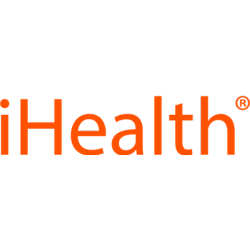Benefits of Different Types of Exercise
Muscle in the human body is very important for metabolism. Each time you move your arm, or blink your eye, or tap your leg, you are moving a muscle. This is important to know because each time the muscle moves it shreds the muscle fibers slightly, breaking them down slowly, and thus using some energy (sugar). At night when you sleep, and also when at rest, your body must regenerate these muscles, which takes even more energy (more sugar). Your muscles are constantly renewing and regenerating themselves, replacing old muscle with new.

We get new building blocks for muscle from the protein we get from the diet (meat, fish, poultry, eggs, cheese, nuts, and beans), but the process of building and replacing muscle takes a lot of energy, in the form of sugar (the carbohydrates that we eat). In general, the more muscle you try to build, the more sugar and protein your body uses to build those muscles. To maintain that muscle that you built, your muscles then demand more sugar, pulling it out of the blood, making your body more efficient at glucose absorption, and thus lowering glucose.
Besides lowering blood sugars, exercise has a wide variety of other benefits to your health. It improves circulation, stamina, and energy levels over time. Exercise also gradually improves our mood, reduces symptoms of depression, lowers blood sugar, controls and steadies blood pressure gradually, and builds our energy levels.
There are different types of exercise, and different ways that they improve our health (especially blood sugars and blood pressure). Generally, we know that aerobic activity like walking, riding a bike or dancing is great for us. Gaining more muscle with strengthening exercises also has its benefits. It's important here to know the difference.



Three Main Differences between Aerobic and Strengthening Exercises:
1- What Effects they have on health:
Walking, running, cycling and swimming are considered aerobic activities- they make us breathe harder and faster. They work our heart more, forcing us to pump more blood, and sending signals to our blood vessels to relax and widen to allow more blood to flow through. All this takes energy to move your body and create the heart/artery response.
As a result, aerobic activities like these will help lower your glucose during and for a few hours after the activity is over. These activities are also called "cardio" workouts because they work your heart, gradually elasticizing your blood vessels, improving their ability to dilate, and thus helping to lower blood pressure over time. For people with severe artery blockages, intense aerobic exercise should be limited. Talk to your doctor and UnifiedCare team to understand what level of aerobic activity is best for your situation.
2- How long the effects last:
Walking, for example will lower your blood sugars even for a few hours after you've finished the activity, and after a few months of walking, blood vessel elasticity improves and blood pressure typically improves with it. Since it works mostly the heart, people that walk regularly are helping the health of their heart, but generally not building new muscle, just maintaining what they already have.
Strengthening exercises don't really help improve heart health, however. Building new muscle, like with strengthening exercises, will help lower blood sugars for 36-48 hours. In other words, having more muscle means your blood sugars will be more controlled in general even when you sleep- so the effect on your blood glucose is low and slow- it is typically less noticeable right away, but the effect lasts days.
3 - Different workouts have different secondary benefits:
Aerobic or cardio exercise helps improve our mood, stamina, breathing ease, and digestion. As a result, our sleep, appetite, and depression risks also improve. Aside from improving glucose and blood pressure, weight loss and improved self-confidence are also side benefits.
Strengthening exercises help improve muscle mass. When we have more muscle surrounding our joints, less strong or more painful joints become aided by the help of your new muscle. When new muscle is formed with proper form and technique, our posture, joint strength, and stamina all improve, allowing you to move more effortlessly and with less pain.



Get the Best of Both Worlds: Combine Aerobic Activity with Strength exercises
We have a million reasons why adding more physical activity to the daily routine is difficult or seemingly impossible. Whether you are running out of time, tired after a long day, or you have limited mobility, there are still some activities you can do to help build or maintain muscle mass. If you're ambitious, you can combine both cardio activity and strengthening in one with the following exercise examples:
- Lower intensity cardio and strength training:
- Chair-dancing or "Sit-and-be-Fit" exercises
- Tai Chi
- Moderate intensity cardio and strength training:
- Cycling with resistance
- swimming
- High intensity cardio and strength training:
- HIIT (high intensity interval Training) like bodyrock, P90X or insanity workouts
- Crossfit workouts
Enjoy trying some new activities! Remember, if it hurts, don't do it!

Talk to your doctor and UnifiedCare team if you have any question!
This feature is coming soon
-
July 09, 2024
-
May 08, 2024
-
March 04, 2024
This feature is coming soon
You May Also Like
Title placeholder
posted_date placeholder
Title placeholder
posted_date placeholder
Title placeholder
posted_date placeholder
Title placeholder
posted_date placeholder
Title placeholder
posted_date placeholder
Title placeholder
posted_date placeholder
Title placeholder
posted_date placeholder
Title placeholder
posted_date placeholder
Title placeholder
posted_date placeholder
Title placeholder
posted_date placeholder
Title placeholder
posted_date placeholder
Title placeholder
posted_date placeholder
Title placeholder
posted_date placeholder
Title placeholder
posted_date placeholder
Title placeholder
posted_date placeholder



